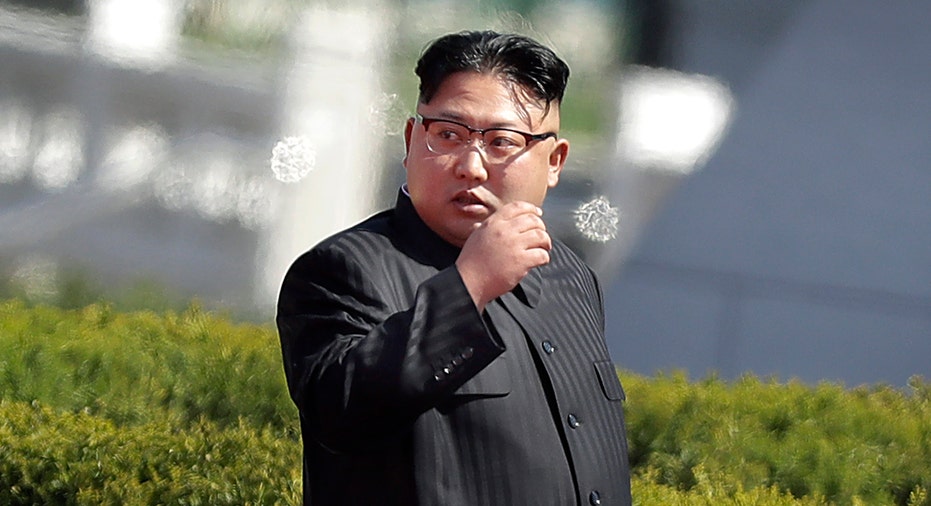U.S. tells North Korea it is prepared to go to war

The U.S. warned North Korea that it is ready to fight if provoked, as Pyongyang claimed another weapons-development breakthrough following its launch of an intercontinental ballistic missile a day earlier.
The regime, having demonstrated its capacity to reach the U.S. with a missile, on Wednesday touted another achievement of the test launch: It claimed that its missile warhead--the forward section, which carries the explosive--can withstand the extreme heat and pressure of re-entering the earth's atmosphere.
If true--the claim couldn't be independently verified--that would clear another hurdle in developing a nuclear-tipped missile that can reach American cities.
As tensions between Washington and Pyongyang rose, Gen. Vincent Brooks, the top American military commander in South Korea, said in a statement Wednesday that the U.S. and South Korea are prepared to go to war with the North if given the order.
"Self restraint, which is a choice, is all that separates armistice and war," Gen. Brooks said. "We are able to change our choice when so ordered....It would be a grave mistake for anyone to believe anything to the contrary."
Earlier in the day, allied armies conducted a rare live-fire drill, launching tactical surface-to-surface missiles off the east coast of Korea--an action they said was aimed directly at "countering North Korea's destabilizing and unlawful actions on July 4."
The drill and tough language appeared meant to reassure Seoul after North Korea's successful ICBM test, a significant advance.
Secretary of State Rex Tillerson described the development as an escalation of the threat to the U.S. It came despite years of sanctions and warnings aimed at preventing Kim Jong Un's regime from reaching the milestone.
Washington has considered military action against North Korea, but pulling the trigger presents serious risks. Seoul, a city of 10 million, sits just 35 miles from the North Korean border, where Pyongyang has assembled artillery that could inflict devastating damage on the densely populated South Korean capital.
"A single volley could deliver more than 350 metric tons of explosives across the South Korean capital, roughly the same amount of ordnance dropped by 11 B-52 bombers," said a report published last year by Austin, Texas-based geopolitical consultancy Stratfor.
If attacked by the U.S., North Korea would also likely fire on U.S. ally Japan, which is within range of many of Pyongyang's missiles. During one launch in March the North fired four missiles at once toward Japan, which some analysts interpreted as a warning that it could overwhelm any Japanese missile defense.
Meredith Sumpter, director of Asia for Eurasia Group, wrote in a note to clients Tuesday that the odds of a U.S. military strike on North Korea remain low--about a 10% probability--adding it would probably be well-signaled by the U.S. and "clear to outside observers in advance of any military move."
A report published Wednesday in North Korea's official state media said the warhead its missile carried Tuesday maintained a steady temperature and held its structure even "during the harshest atmospheric re-entry environment."
For a missile to cross the Pacific Ocean, it must exit and then re-enter the atmosphere. Re-entry puts incredible stress on the warhead.
The United Nations Security Council is scheduled to hold a meeting on North Korea later Wednesday, following a request from Nikki Haley, the U.S. ambassador to the U.N.
South Korean President Moon Jae-in, who has called for more dialogue and closer economic ties with North Korea, said Wednesday that the time had passed for simply issuing statements in response to the North's "serious provocation."
"We must show North Korea the strength of our resolve with our missile-launch exercise," Mr. Moon said, according to his spokesman.
The U.S. has been making shows of force in recent months in response to perceived increases in tension on the Korean Peninsula. In April, it said it was sending the USS Carl Vinson carrier strike group to the western Pacific to underscore Washington's commitment to the region. In that case, the announcement instead raised questions about U.S. credibility after it came to light that the aircraft carrier was thousands of miles away.
And twice in May, the U.S. sent B-1B bombers on flyovers near the Korean Peninsula. Each came shortly after a North Korean missile test.
Write to Jonathan Cheng at jonathan.cheng@wsj.com



















